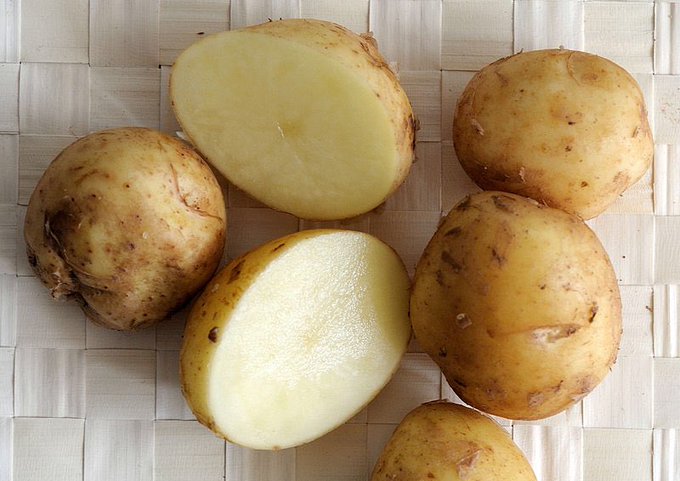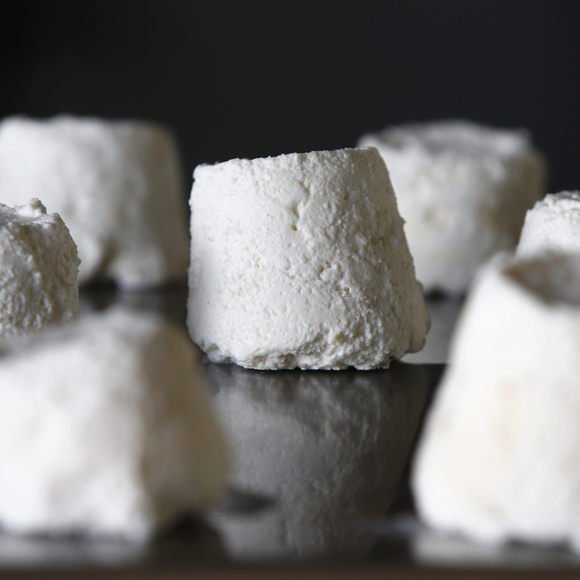World's Most Expensive Foods

September 17, 2023
•11 min read
Have you ever wondered what the most expensive foods in the world are? Let's take a look at some extremely expensive foods from around the world!
Tired of eating the same old food? Fancy a taste of some of the finest ingredients money can buy? Some meals would set you back more than just a few thousand dollars. Let's explore some foods that are only available to the rich.
Coffin Bay King Oysters
Let’s kick things off with one of the most prestigious entrees around: oysters. Unless you happen to be drowning in cash, these babies probably aren’t part of your typical Friday night dinner. There are many varieties of this legendary delicacy, but just one can be named the literal king of all oysters: The Coffin Bay King Oyster.
Grown exclusively on a farm located within a sheltered Peninsula off the Australian West Coast, these wallet-busting mollusks come with a hefty price tag of about $ 75 a pop. After being grown for 6 years (rather than the usual 18 months) each bad boy can weigh up to 2 lb, meaning they can have up to 10 times more meat than their run-of-the-mill cousins. Their strong aroma and complex taste have earned them the title of “the oyster steak of the ocean” but if you want to shell out and see for yourself you’ll have to head down to Australia’s Eyre Peninsula.Almas Caviar
Oysters are a great appetizer but if you wanna get real swanky, why not throw some in some caviar? Behold the almighty Almas Caviar, which will set you back a cool $34,500 per 2.2lb tin. Of course, the tin is made of metal which has been bathed in 24-carat gold.
Caviar is usually made from the eggs of the Sevruga, Osetra, and Beluga species of sturgeon fish, but this ‘white caviar’ comes exclusively from the albino Beluga sturgeon which lives in the Caspian Sea. Because their albinism is caused by a genetic disorder, albino Belugas are extremely rare nowadays. That doesn’t stop the filthy rich from dashing their chances of survival even more by eating their eggs anyway. The pearl-like eggs are extracted from specimens over 100 years old and are said to boast an intensely nutty, creamy taste best enjoyed on toast or over ice, with vodka to finish.Bird's Nest Soup
Have you ever felt compelled to climb a tree and chow down on an entire bird's nest? Or better yet, take it home and turn it into soup? Believe it or not, bird's nest soup is a major delicacy in China, costing anywhere between $2,500-$10,000 per kilogram.
These aren’t any old bird's nests, but the nests of swallows or swiftlets which are made from 100% saliva. These birds make their babies homes out of their own solidified spit, and some culinary connoisseurs can’t get enough of the stuff. When they’re boiled in water, the delicate nests dissolve into a gelatinous gloop which is supposedly perfect for soups.The asking price of about $100 per bowl can be attributed to how hard the nests are to get hold of in the first place. Climbers must scale the dark and dizzying heights of the Madai Caves in Malaysia to scout for nests that are ready for the picking; ideally after one batch of eggs has hatched, but before a second. After that, each tiny feather must be individually removed by hand.Ayam Cemani Black Chicken
The Ayam Cemani chicken, which hails from Indonesia, isn’t just coated in jet-black feathers; it’s totally black on the inside, too. This "Lamborghini poultry" grows at a slower rate and supposedly tastes slightly better than your everyday kind, but Cemani’s aren’t actually eaten for their flavor.
The reason for its elusiveness and desirability is that the bird can be traced back to Japanese folklore of the 12th century, where it was considered a mystical food of the elite. Its charcoal-colored blood is also rumored to bring power and wealth to those who consume it, making it a sought-after ‘good luck’ charm in certain cultures.Kobe Beef
Steak makes a mean main course, but if you want a truly premium experience there’s one kind that’ll do the job: Kobe Beef. These illustrious cuts of meat are procured from the Tajima-gyu breed of Japanese Wagyu cattle which are raised in the Kobe region. The animals are so well-esteemed that they live like kings: they’re massaged daily, played classical music and even fed beer to induce their appetite.
Kobe beef is renowned for its superior flavor, tenderness, and high amount of intermuscular fat, which contributes to its ‘melt-in-the-mouth’ qualities. All Wagyu beef is rated on a "marbling scale" of 1-12 based on this distribution of fat, and Kobe Beef only qualifies if it scores between 10-12.The luxury beef market has even been tainted by controversy after numerous establishments tried to pass off regular Wagyu beef as Kobe. With Kobe fraud rampant in the US, all cuts must now be assigned a 10-digit ID number so that it can be traced back to the cow it came from.Restaurateurs must also carry a license of authenticity that can be shown on demand. So if you’re a beef aficionado, it’s worth checking before shelling out up to $300 for a single pound of meat.Blonde d'Aquitaine Steak
For those rich enough to take a “been there, done that” approach to Kobe Beef, perhaps Blonde d'Aquitaine Steak is more your forte. This rare beef is considered the most expensive steak in the world, and you can expect to pay about $3,200 for just one cut.
The meat comes from prized free-range Blonde d’Aquitaine cattle and is produced by Parisian butcher Alexandre Polmard on his family farm in north-eastern France. The extortionate price tag is thanks to the technique Polmard developed in the 1990s to treat the meat. The cattle are hand-reared and free to roam the forests and grasslands of the French countryside, and only four are killed weekly.La Bonnotte Potatoes
The potato is one of the most humble foods around, but not when it comes to the sought-after ‘La Bonnotte’ variety, the world’s most expensive potato. These spuds are so well-regarded that they’re even known as the caviar of the potato world. But why?
Firstly, they’re almost exclusively grown on the tiny island of Noirmoutier off the coast of Western France, and only about 20 tonnes are produced yearly. Preparing them for sale is also an arduous process because they’re too delicate to be machine-harvested, so each potato must be carefully hand-picked instead.The #TourdeFrance took off today from the small island town of Noirmoutier-en-l’Île, known for top-notch seafood and “La Bonnotte," one of the rarest potato varieties in the world! Harvested by hand, these potatoes attain their unique flavor from seaweed in the soil. #TourdeFood
White Truffles
If there’s one thing capable of elevating a dish to new layers of prestige, it’s truffles. These fragrant fungi are some of the world’s rarest delicacies, and even the Romans couldn’t get enough, attributing them with therapeutic and aphrodisiac properties. White Truffles, or “the diamond of the kitchen”, is by far the best.
Kopi Luwak: Asian Civet Cat Poop Coffee
Many people enjoy an after-dinner beverage, and if you’re entertaining guests with particularly deep pockets, perhaps only Kopi Luwak Coffee will suffice. Legend has it this highly valued coffee was first discovered in Indonesia under Dutch colonial rule. Native farmers and plantation workers were forbidden from harvesting coffee for their own use and were left to scrounge around for it.
That’s when they made an unusual discovery: civet cats would eat coffee cherries and poop out the seeds (or coffee beans) without digesting them. After brewing coffee from the discarded beans, they realized it tasted great too, mostly because the civets picked only the ripest cherries.The tradition continued, and nowadays vendors of authentic Kopi Luwak Coffee can command anywhere between $250-$1,200 per kilogram. There are some controversies surrounding the unconventional beverage though.Densuke Black Watermelon
After a meal as rich as the ones we've laid out, a fresh fruit salad is about as much dessert as you could manage. This won’t be any old fruit though. The rare Densuke Black Watermelons are exclusively grown on the northern island of Hokkaido in Japan in annual quantities of about 10,000 units.
Besides their intriguingly dark outer appearance, they’re said to have crisper flesh, more juice, and an enhanced sweetness compared to their overseas relatives. There’s a lucrative market for decorative fruit in Japan, so it's not uncommon for Densukes to be purchased as expensive gifts. Depending on the size, they usually go for upwards of $250, but in 2008 one fine specimen even sold for $6,100.Yubari King Melon
Even the Densuke is a bargain compared to Japan's most highly-priced melon: the Yubari King, which is basically a cross between two cantaloupes. This esteemed fruit is also exclusively grown on Hokkaido Island and is a major status symbol for anyone with enough spare dough to add one to their collection.
In Spring 2016, supermarket owner Takamaru Konishi hit the headlines after he pocketed a pair of Yubari Kings for the eye-popping price of $27,240, making them the most expensive melons ever sold. Apparently, these premium fruits have an ultra-concentrated sweetness. Konishi said he offered such a fee for the melons to pay back the hard work of the Yubari farmers, but even a less-coveted buyer can still expect to pay thousands at auction.Ruby Roman Grapes
Japan’s luxury fruit market isn’t just exclusive to melons, and in 2019 Takamaru Konishi raised eyebrows again after paying $11,318 for a bunch of Ruby Roman Grapes, which worked out at around $370 per grape.
Pule Donkey Cheese
A cheese course is the perfect way to complete a meal, but for a banquet like this one plain old cheddar just won’t cut it. Believe it or not, there’s such a thing as donkey cheese, otherwise known as Pule, and it’ll cost you a pretty penny. This bizarre creation is only produced by farmer Slobodan Simic on his rural farm in Serbia with the help of some 300 donkeys from the Zasavica Nature Reserve.
Straight out of Monty Python: The world's most expensive cheese is Pule, or Balkan Donkey Cheese. atlasobscura.com/foods/pule-don…



















](https://beamazed.b-cdn.net/dfhvoxjgb/image/upload/v1716774087/incredible-discoveries-found-underground-that-changed-history/6tbcL3T2uQwsQiOLhibMZD.jpg?width=400)






